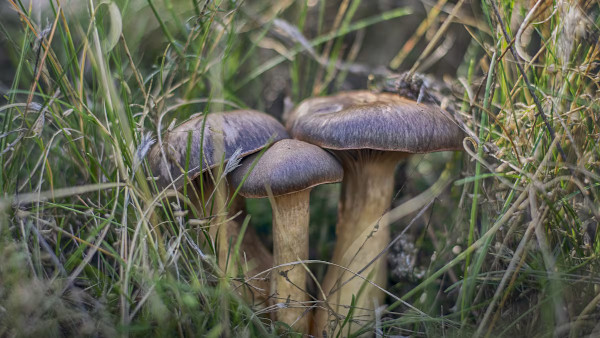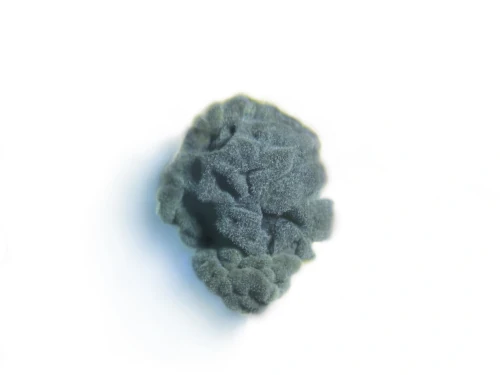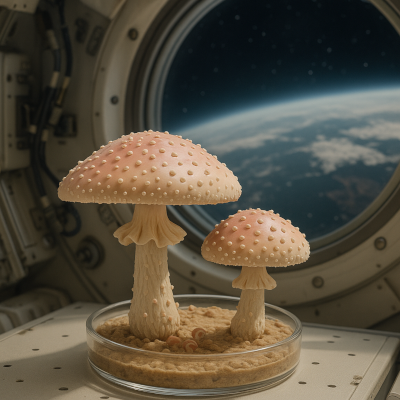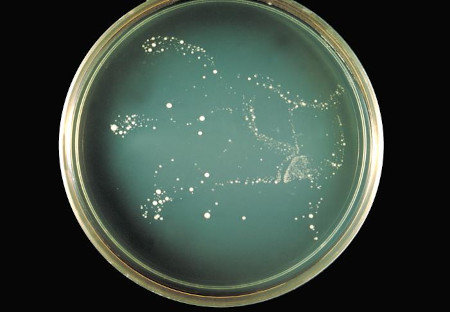Radiotrophic fungi: organisms that transform radiation into life
In the most inhospitable corners of our planet, where ionizing radiation turns the environment into a lethal wasteland for most known forms of life, there exists an extraordinary group of organisms that not only manage to survive, but thrive in surprising ways.
Radiotrophic fungi represent one of the most fascinating discoveries in modern biology, challenging our traditional conceptions about the limits of life and opening new perspectives on survival in extreme conditions.
Delve into the world of radiotrophic fungi, a promising frontier between biology, astrobiology, and technology.

What are radiotrophic fungi?
Radiotrophic fungi constitute a singular group of microorganisms that possess the extraordinary ability to use ionizing radiation as an energy source for their growth and metabolism. This characteristic fundamentally distinguishes them from other organisms, as they can harness forms of energy that are lethal to the vast majority of living beings.
To better understand this phenomenon, it's important to establish a clear analogy: just as plants use solar energy through photosynthesis to produce sugars and grow, these fungi have developed mechanisms that allow them to capture and convert energy from gamma radiation, beta radiation, and other forms of ionizing radiation into usable energy for their vital processes.
However, it's crucial to clarify that these organisms don't "consume" or "eat" radiation in the literal sense, but rather have evolved sophisticated biochemical systems to transform this energy into usable forms.
Resistance vs. Radiotrophy
It's fundamental to distinguish between truly radiotrophic fungi and those that simply show resistance to radiation. While many microorganisms can develop tolerance to radioactive environments through DNA repair mechanisms and other protective systems (such as Deinococcus radiodurans or Thermococcus gammatolerans bacteria), radiotrophic fungi go one step further: they not only resist radiation, but actively use it as an energy source.
This distinction is crucial for understanding the uniqueness of these organisms and their potential application in various areas.
The role of melanin in fungi
The exact mechanism by which these fungi achieve this feat is still not completely understood, but scientific research has identified a key component in this process: melanin. This dark pigment, known primarily for its role in human skin pigmentation, appears to play a fundamental role in the radiotrophic capacity of these organisms.
The most accepted hypothesis suggests that melanin acts as a kind of "molecular antenna" that can capture ionizing radiation and facilitate its conversion into usable chemical energy. The experimental evidence is compelling: while melanized fungi experience this accelerated growth under radiation, albino mutant strains without melanin do not show this phenomenon, confirming the central role of this pigment in the radiotrophic process.

How does melanin work in fungi?
From a biochemical perspective, the radiosynthesis process in melanized fungi involves a complex interaction between melanin and electrons released by ionizing radiation. Melanin, a heterogeneous polymer with conjugated aromatic structures, acts as a biological semiconductor, capable of facilitating electron transport through its molecular network.
When fungi are exposed to ionizing radiation (mainly gamma), this energy excites melanin molecules, altering their electronic properties. Spectroscopic studies have shown that, after radiation exposure, melanin increases its capacity to reduce agents like ferricyanide, indicating an increase in the polymer's redox activity. This effect suggests that melanin functions as an electron capture and transfer system, similar to the role that chlorophyll centers play in plant photosynthesis.
Additionally, it has been observed that radiation-induced structural changes increase the density of accessible electronic states in melanin, facilitating electron donation and acceptance processes in metabolic pathways associated with cell growth. This phenomenon could be associated with ATP generation via non-conventional fermentative or respiratory pathways, although the exact metabolic mechanisms have not yet been fully characterized.
Another complementary hypothesis suggests that melanin acts as a dynamic antioxidant, neutralizing reactive oxygen species (ROS) generated by radiation. This protective action not only prevents cellular damage, but could be part of the general energy capture system, through reactions coupled to the generation of electrochemical potentials usable by the cell.
Discovery of radiotrophic fungi

The first evidence of radiotrophic fungi emerged in the Chernobyl exclusion zone, in the 30-kilometer radius area around the nuclear power plant that suffered the accident. In 1991, just five years after the accident, a black mold was observed growing inside reactor number 4, in the zone of maximum contamination. This initial discovery revealed a surprising phenomenon: not only was there life in the most radioactive place on the planet, but it seemed to be thriving.
The year 2007 marked a turning point in understanding these organisms. A team led by Ekaterina Dadachova at Albert Einstein College of Medicine published a study that radically changed the scientific perspective. They experimentally demonstrated that melanized fungi such as Cladosporium sphaerospermum, Cryptococcus neoformans, and Wangiella dermatitidis not only increased their biomass under intense radiation, but also assimilated more carbon.
Expansion to space
Scientific interest extended to the space realm when in 2016, a team from NASA's Jet Propulsion Laboratory (JPL), led by Kasthuri Venkateswaran, took eight species of fungi collected in Chernobyl to the International Space Station to study their response to microgravity and space radiation.
Although a complete list of the eight species has not been published, it is known they were selected for their ability to survive in highly radioactive environments and for their potential to produce compounds with pharmaceutical and agricultural applications. The researchers sought to determine whether the extreme conditions of space could induce these fungi to produce new secondary metabolites with bioactive properties.
It is known that fungi can generate useful compounds, such as antibiotics and immunosuppressants, in response to stressful environments. Therefore, space offers a unique environment to explore the production of new compounds that could have applications in medicine and agriculture.
Current applications and future potential of radiotrophic fungi
Radiological protection in space
Radiotrophic fungi, such as Cladosporium sphaerospermum, have demonstrated their ability to attenuate radiation. Experiments on the International Space Station revealed that a layer of only 2 mm can reduce incoming radiation by up to 2%. It is estimated that a 21 cm coating would offer effective protection against Martian radiation, which could revolutionize safety in long-duration space missions.

Additionally, research is being conducted on their direct cultivation on suits, habitats, or space structures, creating self-replicating and sustainable biological shields.
New radiation-resistant materials
Melanin extracted from these fungi is being incorporated into conventional materials to improve their radiation resistance. Johns Hopkins University has tested melanin-infused plastics on the ISS, with potential applications: from space textiles capable of filtering solar and cosmic radiation, to construction materials with enhanced protective properties.
It could also be used in electronics, offering effective shielding for sensitive components in high-radiation contexts.
Bioremediation of contaminated areas
Thanks to their ability to use radiation as an energy source, these fungi could play a key role in environmental rehabilitation. They have the potential to accelerate the decontamination of soils and waters, while concentrating radioactive elements in their biomass, which facilitates their collection and safe handling.
Additionally, they could function as living barriers, limiting the spread of contaminants in radiation-affected environments.
Biotechnology and space food
Due to their remarkable radiation resistance and their ability to generate biomass under extreme conditions, these fungi could play a fundamental role in life support systems for space missions.
Currently, their application in bioreactors that not only produce food but also offer radiological protection is being investigated.
Medical applications
Fungal melanin is also being studied in the field of nuclear medicine for its potential as a therapeutic and protective tool. Its use as a base for topical radioprotectors intended for people exposed to radiation in work environments is being explored, as well as for radiosensitizers that could enhance the efficacy of certain oncological treatments.

Limitations, risks, and challenges
Despite their potential, the use and study of radiotrophic fungi face important limitations. First, the underlying biochemical mechanisms are still not fully understood, which hinders their biotechnological exploitation. Additionally, most studies have been conducted under very specific conditions (for example, high-radiation environments like Chernobyl or space stations), which poses challenges for replicating and scaling these systems in other contexts.
There are also ethical and biosafety risks, especially if these organisms are planned to be used in sensitive environments like space or nuclear facilities. Rigorous evaluation is required to avoid unwanted ecological impacts or the release of genetically modified organisms.
On the other hand, although it has been demonstrated that some melanized fungi survive and grow under extreme conditions, it is not clear whether this adaptation implies true energy conversion useful for practical applications. The efficiency of the process, its scalability, and its compatibility with other technological systems remain major questions.
Ultimately, the study of radiotrophic fungi is still in an exploratory phase. Although promising, their exploitation for energy, protective, or constructive purposes requires more basic and applied research, as well as a critical evaluation of the risks and limitations involved.
References
- https://en.wikipedia.org/wiki/Radiotrophic_fungus
- https://www.sciencenews.org/article/dark-power-pigment-seems-put-radiation-good-use
- https://phys.org/news/2020-07-chernobyl-fungi-shield-astronauts.html
- https://mann.usc.edu/news/rocket-carries-chernobyl-fungi-to-the-international-space-station
- https://issnationallab.org/upward/pushing-research-to-new-heights-innovative-research-at-the-iss-rd-conference
- https://futuroprossimo.it/2020/07/la-muffa-del-reattore-di-chernobyl-testata-come-scudo-sulla-iss/
- https://journals.plos.org/plosone/article?id=10.1371/journal.pone.0000457




















